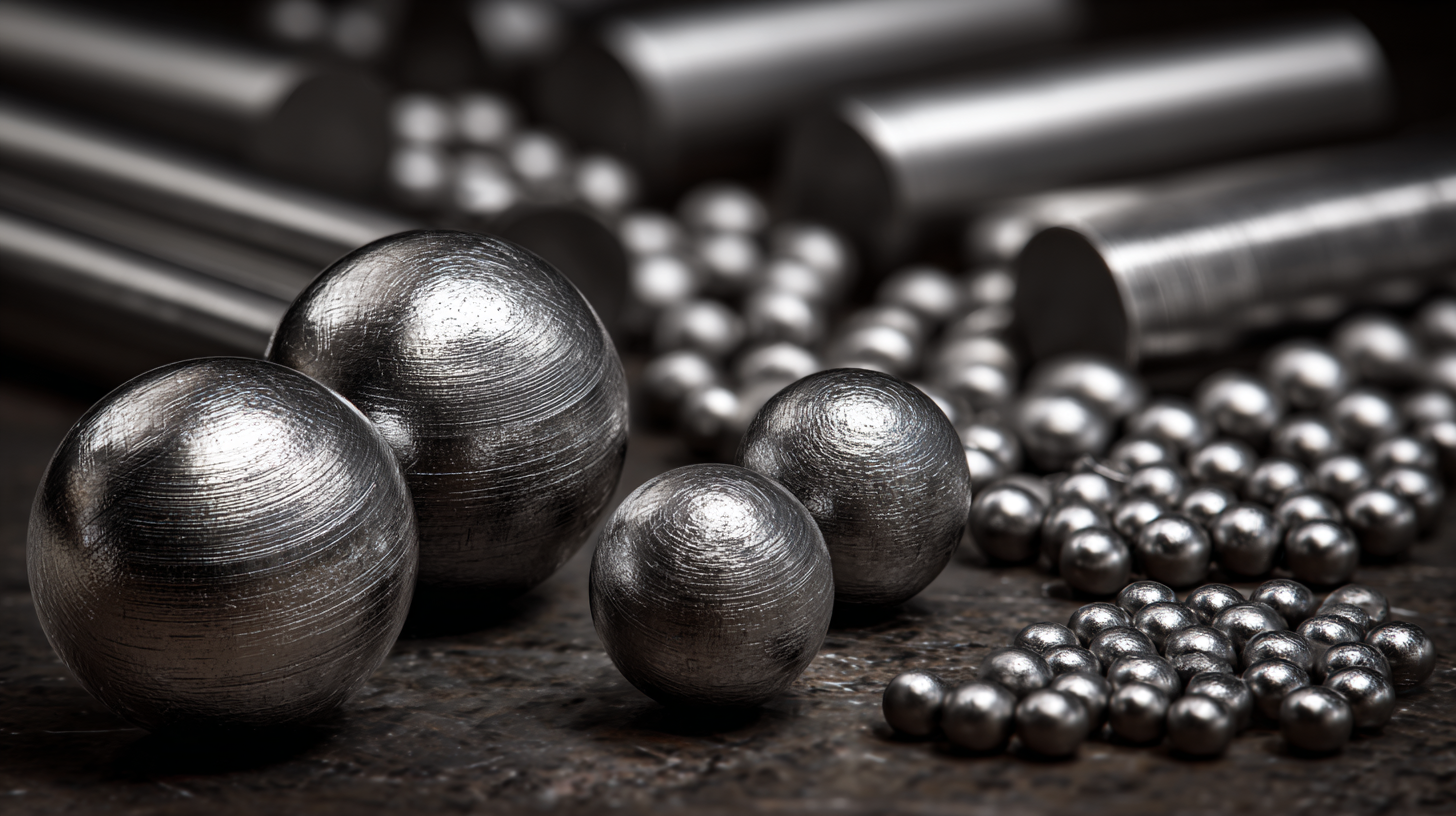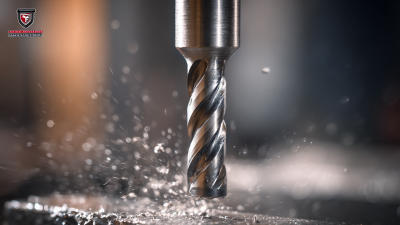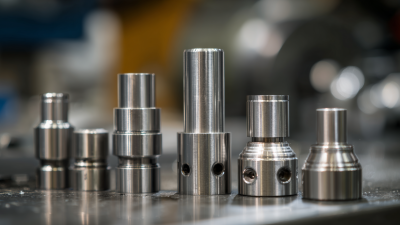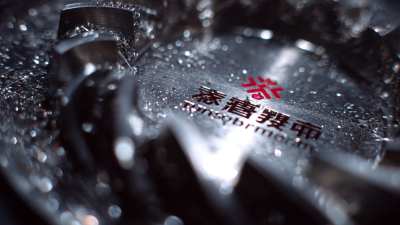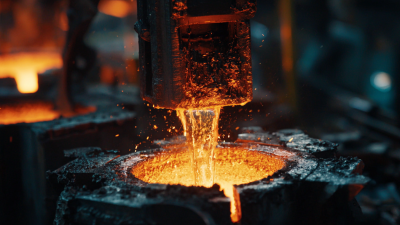Leave your message now to get your free sample and discount price
Leave your message now to get your free sample and discount price
In the realm of materials used for jewelry and industrial applications, Tungsten Solid stands out due to its remarkable properties and versatility. As noted by renowned materials scientist Dr. Emily Carter, "The unique density and hardness of Tungsten Solid not only enhance the durability of jewelry but also make it an exceptional choice for various industrial components." This article delves into the top ten benefits of Tungsten Solid that many may not be aware of, showcasing its potential beyond the traditional perceptions of jewelry-making.
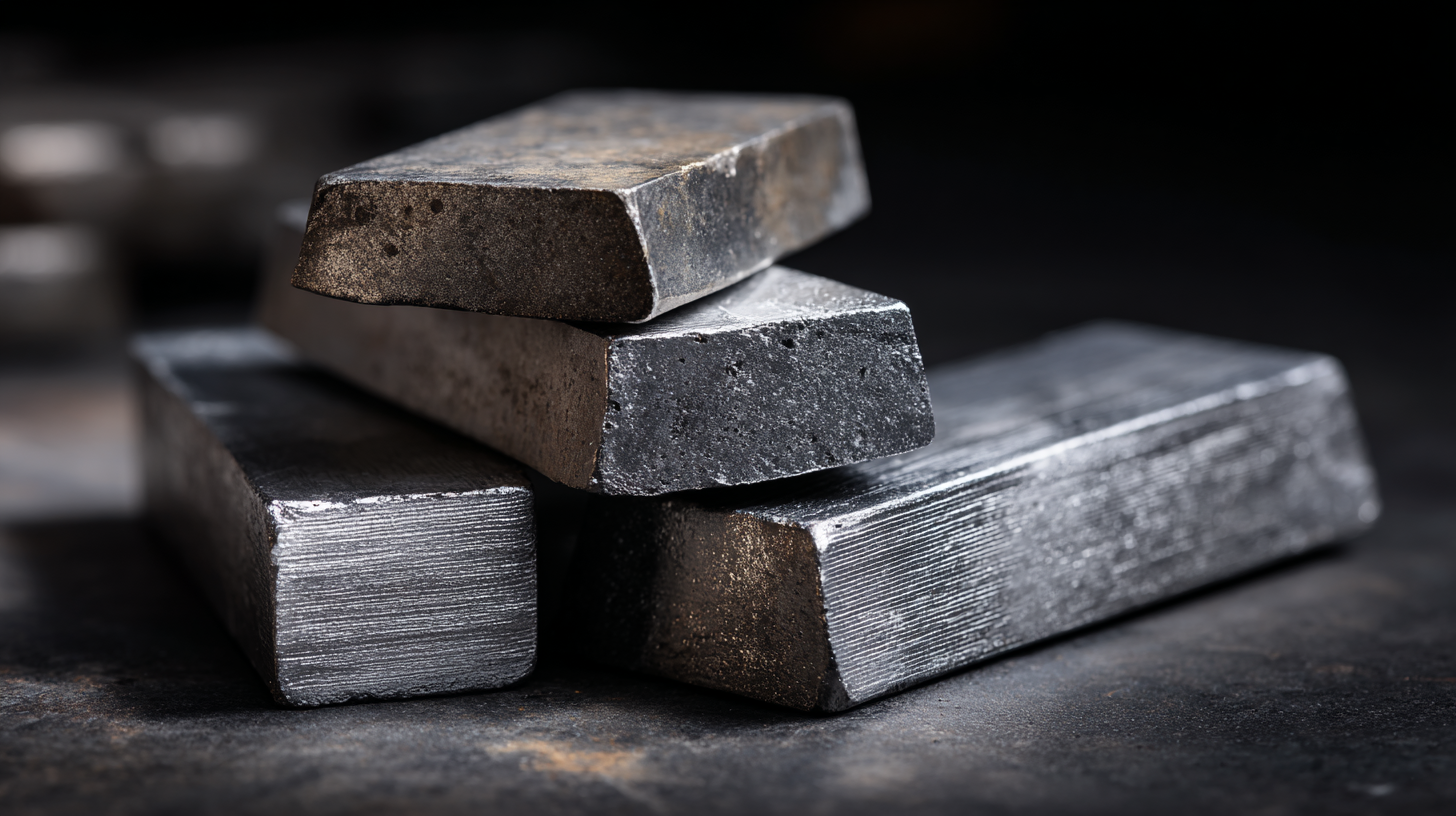
Tungsten Solid is increasingly becoming a preferred material among manufacturers and jewelry designers alike. With its stunning luster, resistance to scratching, and longevity, it not only elevates aesthetic appeal but also ensures that pieces remain in pristine condition over time. Furthermore, its applications within industrial settings highlight its indispensable role, owing to characteristics such as high tensile strength and heat resistance. As we explore these benefits, it becomes clear that Tungsten Solid is more than just a trend; it represents a paradigm shift in both design and functionality across various sectors.
Tungsten has surged in popularity over recent years, particularly in the jewelry and industrial sectors. Its unique properties, such as exceptional hardness and high melting point, have made it a preferred choice for a variety of applications. According to a report by Allied Market Research, the global tungsten market was valued at approximately $16.4 billion in 2020 and is projected to reach $26.6 billion by 2027, reflecting an annual growth rate of nearly 7.5%. This growth underscores the increasing acceptance of tungsten in jewelry design, where its durability is highly sought after.
In the realm of jewelry, tungsten carbide, an alloy of tungsten, stands out for its scratch resistance and lasting shine, making it an ideal material for wedding bands and fashion accessories. Additionally, with the rise of the "modern man" trend prioritizing robust yet stylish options, tungsten jewelry is becoming more mainstream. Industry experts indicate that consumer preferences are shifting towards high-quality, durable materials, and tungsten’s properties align perfectly with these demands, easing concerns over wear and tear. The versatility of this metal not only broadens its appeal but also solidifies its position as a staple in both fashion and industrial applications.
Tungsten is becoming increasingly popular in both jewelry and industrial applications, primarily due to its unmatched durability. The hardness of tungsten, rated as high as 9 on the Mohs scale, far exceeds that of traditional metals like gold, silver, and even platinum. This superior hardness makes tungsten jewelry highly resistant to scratches and abrasions, ensuring it maintains its luster and appearance over time. According to a 2022 report by the International Journal of Materials Science, tungsten carbide, often used in wedding bands, is not only scratch-resistant but is also five to ten times harder than most precious metals, making it an ideal choice for consumers seeking longevity and durability.
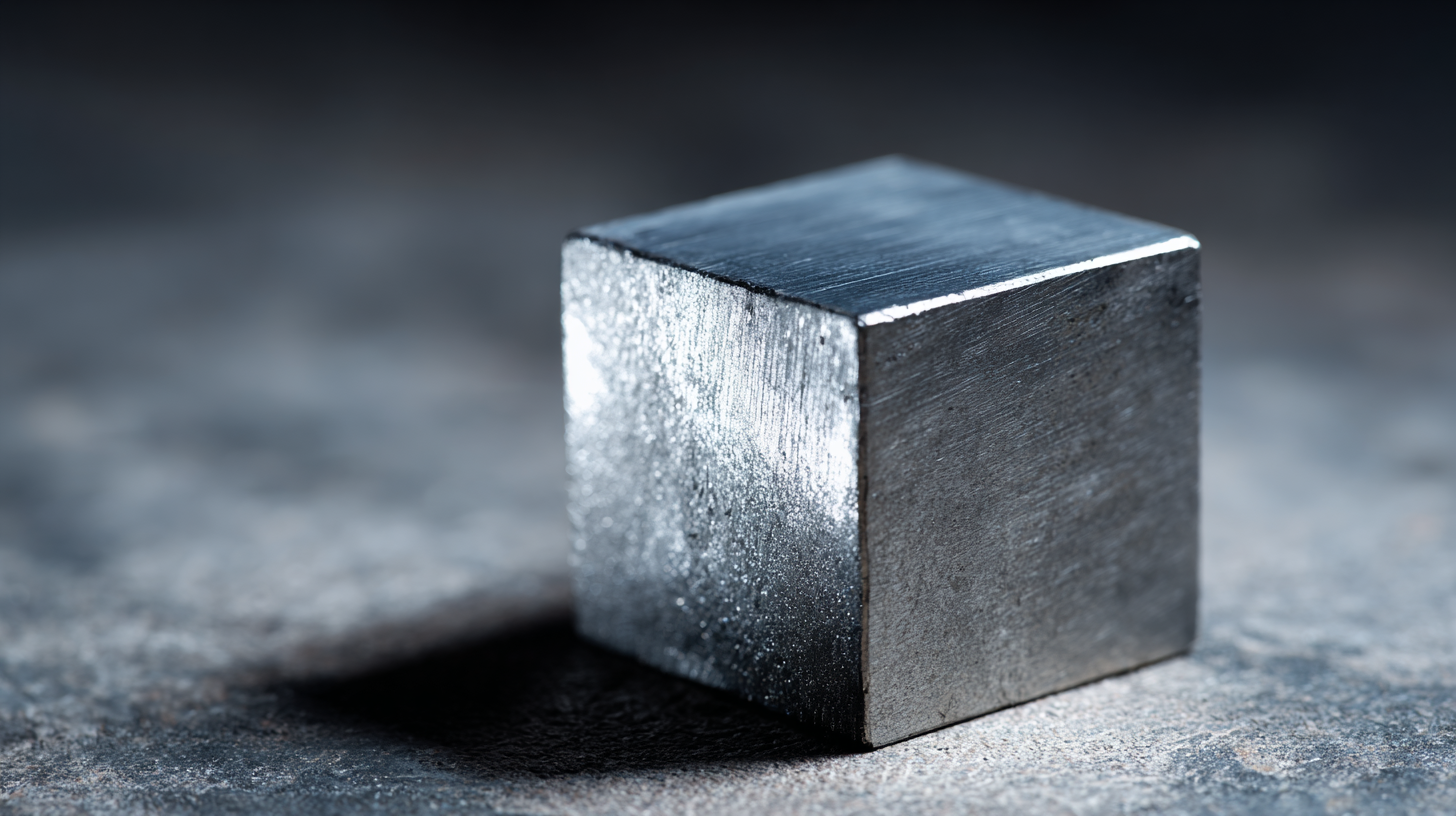
When considering tungsten for jewelry, it’s essential to know that its density, at approximately 19.3 grams per cubic centimeter, gives it a substantial feel that many find appealing. For industrial applications, such as cutting tools and dies, this same density ensures that tungsten components can withstand intense stress while maintaining their shape.
Tip: When selecting tungsten jewelry, look for pieces that are labeled as "tungsten carbide" for enhanced durability. Additionally, always verify the seller's warranty for any claims regarding scratch resistance, as reputable vendors will often provide guarantees that reflect the high durability of their tungsten products.
Tip: For industrial use, ensure that you invest in tungsten tools that meet industry standards, such as ASTM for materials, to guarantee quality and performance in demanding applications.
Tungsten, often lauded for its durability and strength, is also increasingly recognized for its hypoallergenic properties, making it an excellent choice for jewelry, particularly for those with sensitive skin. According to a report by the American Academy of Dermatology, many individuals suffer from metal allergies, with nickel being one of the most prevalent culprits. Tungsten, being a noble metal, contains no nickel and is resistant to corrosion, making it an ideal alternative for hypoallergenic jewelry. This quality ensures that jewelry made from tungsten is less likely to provoke allergic reactions, providing comfort and safety for users with sensitive skin.
Furthermore, a study published in the Journal of Precious Metals found that tungsten's ability to resist tarnishing due to its remarkable hardness contributes to its appeal in industrial applications as well. Unlike softer metals that may wear down and expose the skin to allergens, tungsten maintains its integrity over time. This durability allows for beautifully crafted pieces that remain allergen-free, giving wearers peace of mind. Consequently, the fusion of style and safety in tungsten jewelry appeals widely to consumers seeking both aesthetic and functional benefits.
| Benefit | Description | Applications | Hypoallergenic Properties |
|---|---|---|---|
| Durability | Highly resistant to scratching and bending, making it ideal for long-lasting jewelry. | Jewelry, Industrial equipment | Safe for sensitive skin as it does not cause allergic reactions. |
| Weight | Heavier than other materials, which gives a solid feel. | Rings, industrial tools | Does not contain common allergens. |
| Scratch Resistance | Tungsten is one of the hardest metals, making it impervious to scratches. | Watches, tools | Ideal for those with metal allergies. |
| Hypoallergenic | Less likely to cause skin reactions compared to other metals. | Jewelry, surgical instruments | Excellent for sensitive skin individuals. |
| Variety of Finishes | Available in matte, polished, and brushed finishes. | Custom jewelry design | Suitable for all skin types. |
| Allergy-Free | No nickel content which is a common allergen. | Jewelry, medical devices | Great choice for those prone to allergies. |
| Resistant to Corrosion | Does not tarnish or corrode over time. | Outdoor equipment, jewelry | Safe for extended skin contact without irritation. |
| Modern Aesthetic | Sleek and contemporary look fits modern styles. | Fashion jewelry | Appeals to a wide audience, including sensitive skin. |
| Customizability | Can be customized with engraving or inlays. | Personalized jewelry | Non-irritating for all skin types. |
| Investment Value | Retains value over time, making it a good investment for buyers. | Fine jewelry | Safe for all wearers. |
In the realm of manufacturing, tungsten's exceptional properties have made it a valuable asset, particularly in reducing production costs across various applications. Its high density and hardness make it ideal for creating durable parts that withstand extreme conditions, ultimately leading to fewer replacements and maintenance expenses. According to recent industry reports, the specialization of metal powders, particularly tungsten, is becoming increasingly significant in additive manufacturing, driving demand in North America’s metal powder market.
Tips for manufacturers considering tungsten include evaluating the long-term cost benefits that arise from its use in production. Utilizing tungsten can lead to decreased waste during manufacturing processes due to its excellent machinability, which directly translates to cost savings. Furthermore, employing tungsten in high-stress components results in enhanced performance and longevity, making it an investment rather than a mere expense.
As the trend towards specialized metal powders in additive manufacturing continues to grow, companies looking to innovate should prioritize materials like tungsten to maintain competitiveness. Embracing tungsten not only aligns with contemporary manufacturing trends but also supports sustainable practices by minimizing resource consumption and enhancing product life cycles.
Tungsten has gained significant attention in recent years not only for its unique properties in jewelry and industrial applications but also for its sustainability and recyclability. One of the key environmental benefits of tungsten is its durability. Tungsten products are known for their ability to withstand wear and tear, which means they have a longer lifespan compared to materials like gold or silver. This extended lifespan reduces the frequency of replacement, thereby minimizing resource consumption and waste.
Moreover, tungsten is highly recyclable. When tungsten components reach the end of their lifecycle, they can be efficiently reclaimed and repurposed. The recycling process for tungsten is well-established and requires significantly less energy than mining and refining new tungsten ore. By integrating tungsten into modern products, industries not only reduce their ecological footprint but also foster a circular economy where materials are reused rather than discarded. This makes tungsten a compelling choice for eco-conscious consumers and manufacturers alike, promoting sustainability in both jewelry and industrial applications.
